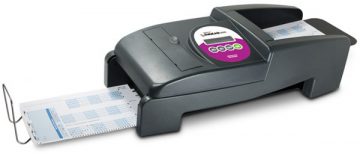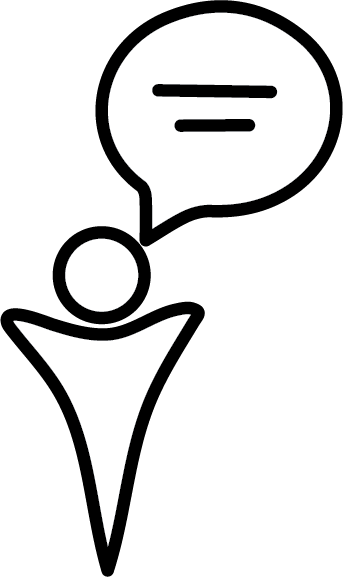Getting Started
We offer simple scanning services using Apperson Datalink 3000. Tests must be completed on the Apperson forms we provide and tests MUST be completed in pencil. You then return the completed forms to our offices for scanning. Once scanning is complete we will provide an EXCEL file of the results and return the students completed forms. 
Common Requests

We provide free Scantron cards to all Applied Science instructors.
We can also provide boxes of golf pencils, but it is usually easier just to remind students to bring pencils.
You can come by our office in CEME 1214 Monday to Friday from 9:00 am to 5:00 pm to pick up a bundle of forms.
Once you drop off the completed student forms, we process and scan the cards and generate the results file for you.
You can drop off completed Scantron cards to our office in CEME 1214 any time Monday to Friday 9:00 am to 5:00 pm
You need to provide an answer key for the test. You do this by completing the same test form the students use, but make sure to tick off [key] bubble at top of the form.
Please provide the following information:
- Completed test sheet with the correct answers [key] bubble filled in
- Number of forms to be scanned
- Email address for us to send the result to and notify you that original tests are ready for pickup.
When you drop off and pick completed forms you will be asked to sign package in and out.
Multiple-Choice questions have two main parts: the question stem or leader, and the options (which include a correct answer). When beginning to construct a multiple-choice question, write the stem of the question first. A well-constructed stem is a stand-alone question that could be answered without examining the options. The wording of the stem and the verbs it contains determines the overall difficulty of the question.
Bloom’s Taxonomy (lower levels)
Remembering
recalling, defining, recognizing, listing, describing, retrieving, naming
Common Question Leaders: How is…? Where is…? When did … happen? How would you describe…? Can you select….? Why did….?
Understanding
explaining ideas or concepts, interpreting, summarizing, paraphrasing, classifying, explaining, locating, identifying, restating
Common Question Leaders: How would you classify…? What facts or ideas show….? Interpret in your own words…? Which statement supports…? How would you summarize…? What is the main idea of…?
Applying
using information in another familiar situation, implementing, carrying out, using, executing , translate, employing, illustrating
Common Question Leaders: What is the best first step? What is the most significant problem? What would be the worst thing to do? Would it be a mistake to…? What is the most common mistake? Which test would you order next? What is the most common diagnosis? How would you use…? How would you solve? What is the most logical order? What approach would you use..? What would result if….? What facts would you select to show…?
This next section highlights some of Bill Roberson’s excellent work.
Writing Questions at different levels Low-level Questions
- What did the text say? (Remembering)
- What did the text mean? (Understanding)
- How could you apply it? (Recognize an example of a concept)
Low-level Questions that invite discussion
- Which statement is most accurate?
- Based on the theory that you just read about, what is most likely to happen is we apply X?
- Which of these items best represent the qualities/characteristics of X?
Higher-level Question that invite discussion
- Based on what you have read about theory A, which of the strategies listed below has the best chance of success, given the specified conditions (X, Y, Z)?
Another Great Question Writing Framework (Gronlund)
ILLUSTRATIVE KNOWLEDGE QUESTIONS
Knowledge of Terminology
- What word means the same as ________?
- Which statement best defines the term ________?
- In this sentence, what is the meaning of the word ________?
Knowledge of Specific Facts
- Where would you find ________?
- Who first discovered ________?
- What is the name of ________?
Knowledge of Conventions
- What is the correct form for ________?
- Which statement indicates correct usage of ________?
- Which of the following rules applies to ________?
Knowledge of Trends and Sequences
- Which of the following best describes the trend of ________?
- Which is the most important cause of ________?
- Which of the following indicates the proper order of ________?
Knowledge of Classifications and Categories
- What are the main types of ________?
- What are the major classifications of ________?
- What are the characteristics of ________?
Knowledge of Criteria
- Which of the following is a criterion for judging ________?
- What is the most important criterion for selecting ________?
- What criteria are used to classify ________?
Knowledge of Methodology
- What method is used for ________?
- What is the best way to ________?
- What would be the first step in making ________?
Knowledge of Principles and Generalizations
- Which statement best expresses the principle of ________?
- Which statement best summarizes the belief that ________?
- Which of the following principles best explains ________?
Knowledge of Theories and Structures
- Which statement is most consistent with the theory of ________?
- Which of the following best describes the structure of ________?
- What evidence best supports the theory of ________?
ILLUSTRATIVE COMPREHENSION AND APPLICATION QUESTIONS
Comprehension Questions
- Which of the following is an example of ________?
- What is the main thought expressed by ________?
- What are the main differences between ________?
- What are the common characteristics of ________?
- Which of the following is another form of ________?
- Which of the following best explains ________?
- Which of the following best summarizes ________?
- Which of the following best illustrates ________?
- What do you predict would happen if ________?
- What trend do you predict in ________?
Application Questions
- Which of the following methods is best for ________?
- What steps should be followed in applying ________?
- Which situation would require the use of ________?
- Which principle would be best for solving ________?
- What procedure is best for improving ________?
- What procedure is best for constructing ________?
- What procedure is best for correcting ________?
- Which of the following is the best plan for ________?
- Which of the following provides the proper sequence for ________?
- What is the most probable effect of ________?
From: How to make Achievement Tests and Assessments – 5th edition by Norman Gronlund
Some Rules for Question Writing
For good question stems, consider following rules:
- Stems should be stand-alone questions.
- Stems should be grammatically complete.
- Negative stems should be used with caution.
- If a key word appears consistently in the options, try to move it to the stem.
- Word the stem such that one option is indisputably correct.
For creating good options, consider following rules:
- Make sure each incorrect option is plausible but clearly incorrect.
- Make sure that the correct answer (keyed response) is clearly the best.
- Avoid, if possible, using “all of the above”.
- Use “none of the above” with caution.
- Try to keep options similar lengths, since test-wise students will pick the longest option if unsure (too long to be wrong).
- Make sure options are grammatically consistent with the stem (question leader) and use parallelism.
- Make sure that numerical answers are placed in numerical order, either ascending or descending.
Well-constructed multiple-choice questions are not easy to create. But the quality of the multiple-choice questions you use in your Team Test can make or break the tone of your class. Nothing is more uncomfortable than rushing poor questions to the classroom and having to endure the inevitable student backlash. Good questions are absolutely essential to our success, and putting in the effort to write good questions is worth your time and attention.
Spend time reviewing and revising your questions. It can be very helpful to have a colleague look at your questions. When we write them we are often too close to see all the mistakes. Just like good writing is about good editing, good questions are about reflection and revision.
Multiple choice questions take time and effort to create good questions.
Poorly written questions can quickly erode student goodwill.
You can meet with Jim Sibley and get training on how to create better questions. He has been providing faculty workshops on question writing skills for over 20 years and can provide individual training and coaching or provide training to larger groups.


